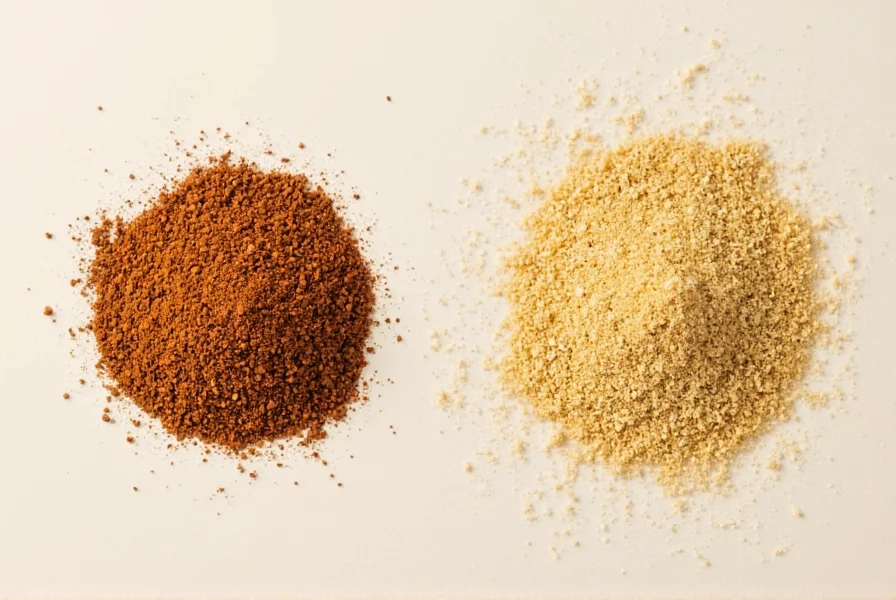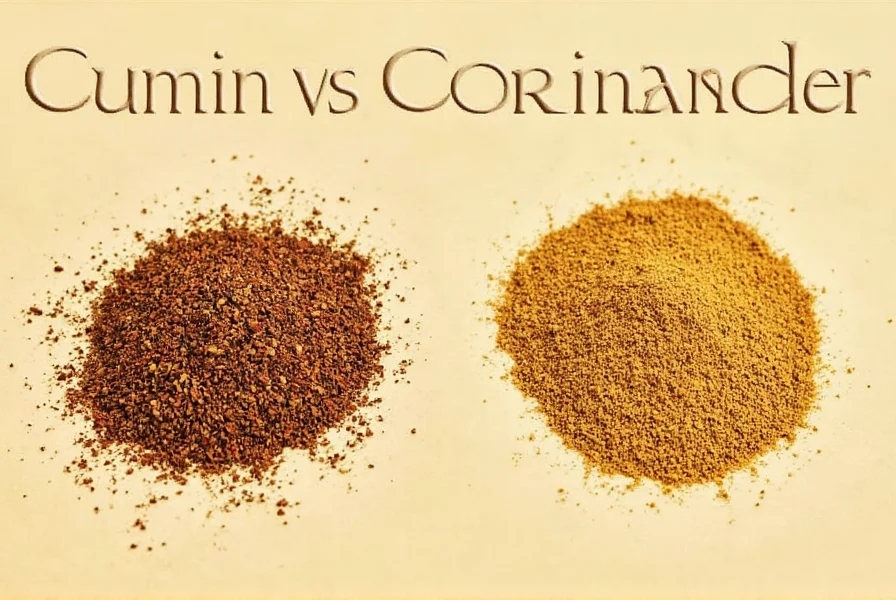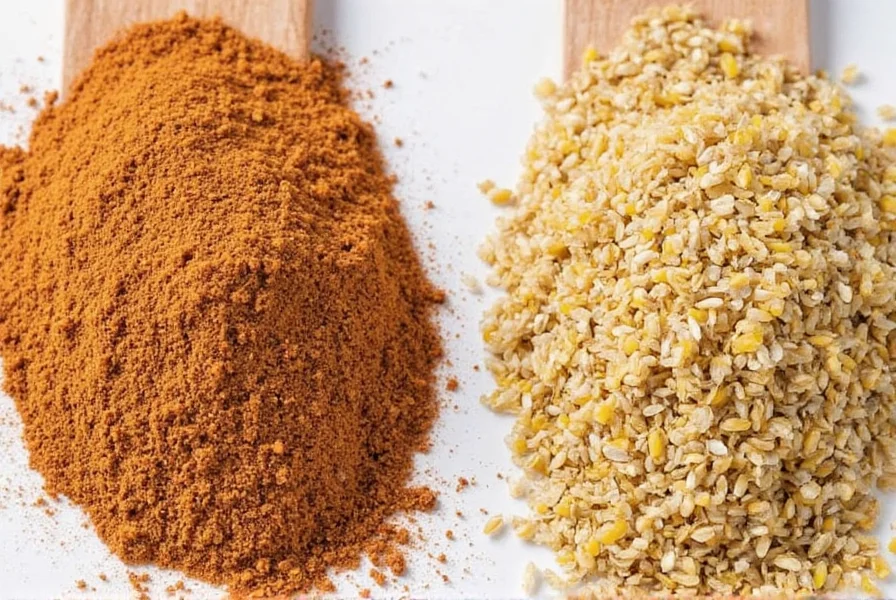Understanding the difference between cumin vs coriander is essential for any home cook navigating global recipes. Despite frequent confusion in grocery stores and cookbooks, these spices come from entirely different plants and deliver unique flavor profiles to dishes. This comprehensive guide will clarify the botanical distinctions, flavor characteristics, and practical culinary applications so you can use each spice confidently.
The Root of Confusion: Terminology Across Regions
The primary source of confusion between cumin and coriander stems from regional terminology differences. In American English, “coriander” refers specifically to the dried seeds of the Coriandrum sativum plant, while the fresh leaves are called “cilantro.” Conversely, in British English and throughout most of the Commonwealth, “coriander” refers to the fresh herb, and “coriander seeds” specify the dried form. Cumin, however, maintains consistent naming worldwide as it comes from a completely different plant species.

Cumin: The Earthy Warm Spice
Cumin (Cuminum cyminum) belongs to the Apiaceae family but is unrelated to coriander. These small, crescent-shaped seeds deliver a distinctive warm, earthy flavor with subtle smoky notes. When toasted, cumin releases aromatic compounds that form the foundation of many spice blends worldwide.
Cumin's robust flavor stands up well to long cooking times, making it essential in dishes like chili, stews, and braises. Professional chefs often toast whole cumin seeds before grinding to maximize flavor complexity. The spice contains cuminaldehyde, which gives cumin its characteristic aroma and offers potential digestive benefits according to culinary nutrition research.
Coriander: One Plant, Two Distinct Products
Coriander comes from Coriandrum sativum, but refers to two completely different culinary products:
Fresh Coriander (Cilantro)
The leafy green herb known as cilantro in the Americas has a bright, citrusy flavor with subtle peppery notes. This fresh component wilts quickly when cooked, so it's typically added at the end of cooking or used as a garnish. Fresh coriander contains volatile compounds like linalool that provide its distinctive aroma but dissipate with heat.
Coriander Seeds
The dried seeds of the same plant offer a completely different flavor profile—warm, citrusy, and slightly sweet with floral notes. When crushed or ground, coriander seeds release terpenes that complement other spices without overpowering them. Unlike cumin, coriander seeds have a more delicate flavor that can be lost with prolonged cooking.
| Characteristic | Cumin | Coriander Seeds | Fresh Coriander (Cilantro) |
|---|---|---|---|
| Botanical Source | Cuminum cyminum | Coriandrum sativum (seeds) | Coriandrum sativum (leaves) |
| Flavor Profile | Earthy, warm, slightly smoky | Citrusy, sweet, floral | Bright, herbal, citrus-peppery |
| Appearance | Small, curved ridges, tan-brown | Rounded, yellowish-tan, ribbed | Feathery green leaves |
| Best Used In | Long-cooked dishes, spice rubs | Curry powders, pickling, baking | Garnishes, salsas, finishing touches |
| Substitution Ratio | 1:1 for other earthy spices | 1:1 for caraway (similar flavor) | Use parsley or basil (different profile) |
Practical Cooking Guidance: When to Use Each
Understanding cumin vs coriander applications can transform your cooking. Cumin's robust flavor makes it ideal for dishes requiring deep, earthy notes—think chili, mole, and Middle Eastern lamb dishes. Its flavor intensifies rather than diminishes with long cooking times, making it perfect for slow-simmered recipes.
Coriander seeds shine in different applications. Their citrusy notes complement fish and chicken dishes beautifully, and they're essential in garam masala, curry powders, and pickling spice blends. When exploring Indian cooking with cumin and coriander, note that many traditional recipes use both spices together, with cumin providing depth and coriander adding brightness.
Fresh coriander (cilantro) serves an entirely different purpose—adding a bright finish to dishes. It's indispensable in Mexican salsas, Southeast Asian noodle dishes, and as a garnish for soups and stews. Unlike the seeds, fresh coriander loses its distinctive flavor when cooked extensively.
Common Substitution Mistakes to Avoid
Many home cooks mistakenly substitute cumin for coriander seeds (or vice versa) due to the naming confusion, but this dramatically alters dish outcomes. Cumin's earthy intensity cannot replicate coriander seeds' citrus notes, and vice versa. If you need a coriander seed substitute for cumin, caraway offers the closest flavor profile, though it's stronger.
When following international recipes, always check the origin. Indian recipes listing “coriander” mean the seeds, while Mexican recipes mentioning “coriander” refer to the fresh herb (cilantro). This distinction is crucial for authentic flavor development in global cuisines.

Storage Recommendations for Maximum Freshness
Proper storage preserves the volatile oils that give these spices their distinctive flavors. Store whole cumin seeds in an airtight container away from light and heat—they'll retain peak flavor for 3-4 months. Ground cumin loses potency faster, so buy whole seeds and grind as needed.
Coriander seeds follow similar storage guidelines but have a slightly shorter shelf life due to their higher oil content. Fresh coriander presents different challenges—store stems in water like flowers, covered with a plastic bag in the refrigerator, for up to a week. For longer storage, blend fresh coriander with oil and freeze in ice cube trays.
Frequently Asked Questions
Can I substitute cumin for coriander in a recipe?
While possible in a pinch, substituting cumin for coriander seeds significantly alters flavor. Cumin provides earthy warmth while coriander offers citrus notes. For better results, use caraway seeds (1:1 ratio) as a coriander seed substitute for cumin, or add a pinch of citrus zest to approximate coriander's flavor profile.
Why do some recipes call for both cumin and coriander?
Many global cuisines, particularly Indian and Middle Eastern, use cumin and coriander together because their flavors complement each other perfectly. Cumin provides deep earthiness while coriander adds bright citrus notes, creating complex flavor layers. This combination forms the foundation of many curry blends and spice mixes.
Is ground coriander the same as fresh coriander?
No, ground coriander comes from dried coriander seeds and has a warm, citrusy flavor, while fresh coriander (called cilantro in the US) refers to the leaves of the same plant with a bright, herbal taste. They're used differently in cooking—seeds work in long-cooked dishes while fresh leaves are added at the end or used as garnish.
Which is stronger, cumin or coriander?
Cumin has a stronger, more assertive flavor than coriander seeds. Cumin's earthy intensity can dominate a dish if overused, while coriander seeds offer a more subtle, citrusy note that blends well with other spices. Fresh coriander (cilantro) has a distinct bright flavor that's strong in its own way but completely different from both.











 浙公网安备
33010002000092号
浙公网安备
33010002000092号 浙B2-20120091-4
浙B2-20120091-4